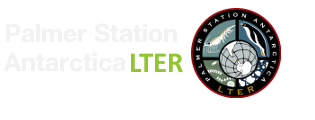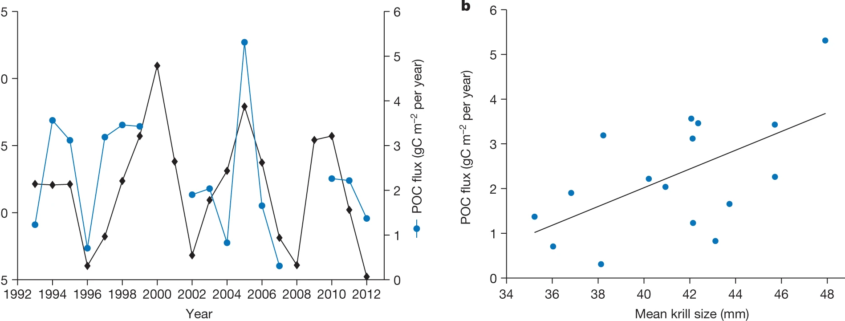New Paper: Krill body size drives particulate organic carbon export in West Antarctica
This week’s issue of Nature includes a new article from PAL LTER team members Rebecca Trinh, Hugh Ducklow, Debbie Steinberg, and Bill Fraser. Congratulations to the team!
For more, check out the abstract and citation below.
The export of carbon from the ocean surface and storage in the ocean interior is important in the modulation of global climate. The West Antarctic Peninsula experiences some of the largest summer particulate organic carbon (POC) export rates, and one of the fastest warming rates, in the world. To understand how warming may alter carbon storage, it is necessary to first determine the patterns and ecological drivers of POC export. Here we show that Antarctic krill (Euphausia superba) body size and life-history cycle, as opposed to their overall biomass or regional environmental factors, exert the dominant control on the POC flux. We measured POC fluxes over 21 years, the longest record in the Southern Ocean, and found a significant 5-year periodicity in the annual POC flux, which oscillated in synchrony with krill body size, peaking when the krill population was composed predominately of large individuals. Krill body size alters the POC flux through the production and export of size-varying faecal pellets, which dominate the total flux. Decreases in winter sea ice, an essential habitat for krill, are causing shifts in the krill population, which may alter these export patterns of faecal pellets, leading to changes in ocean carbon storage.
Trinh, R., Ducklow, H. W., Steinberg, D. K., & Fraser, W. R. (2023). Krill body size drives particulate organic carbon export in West Antarctica. Nature, 618(7965), 526–530. https://doi.org/10.1038/s41586-023-06041-4



 This site was developed with the support of the National Science Foundation under Grant No. OPP-2224611 and OPP-2026045. Any opinions, findings, and conclusions or recommendations expressed in this material are those of the authors and do not necessarily reflect the views of the National Science Foundation.
This site was developed with the support of the National Science Foundation under Grant No. OPP-2224611 and OPP-2026045. Any opinions, findings, and conclusions or recommendations expressed in this material are those of the authors and do not necessarily reflect the views of the National Science Foundation.
